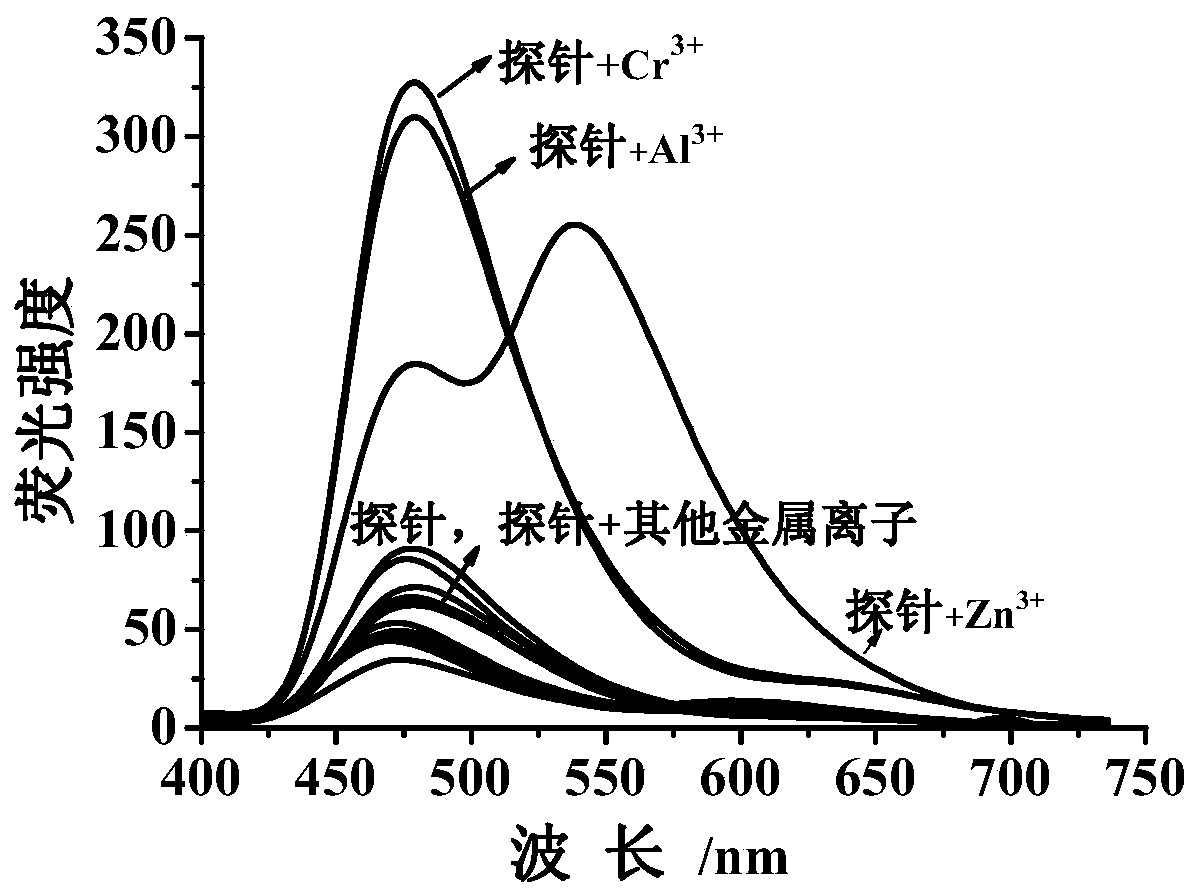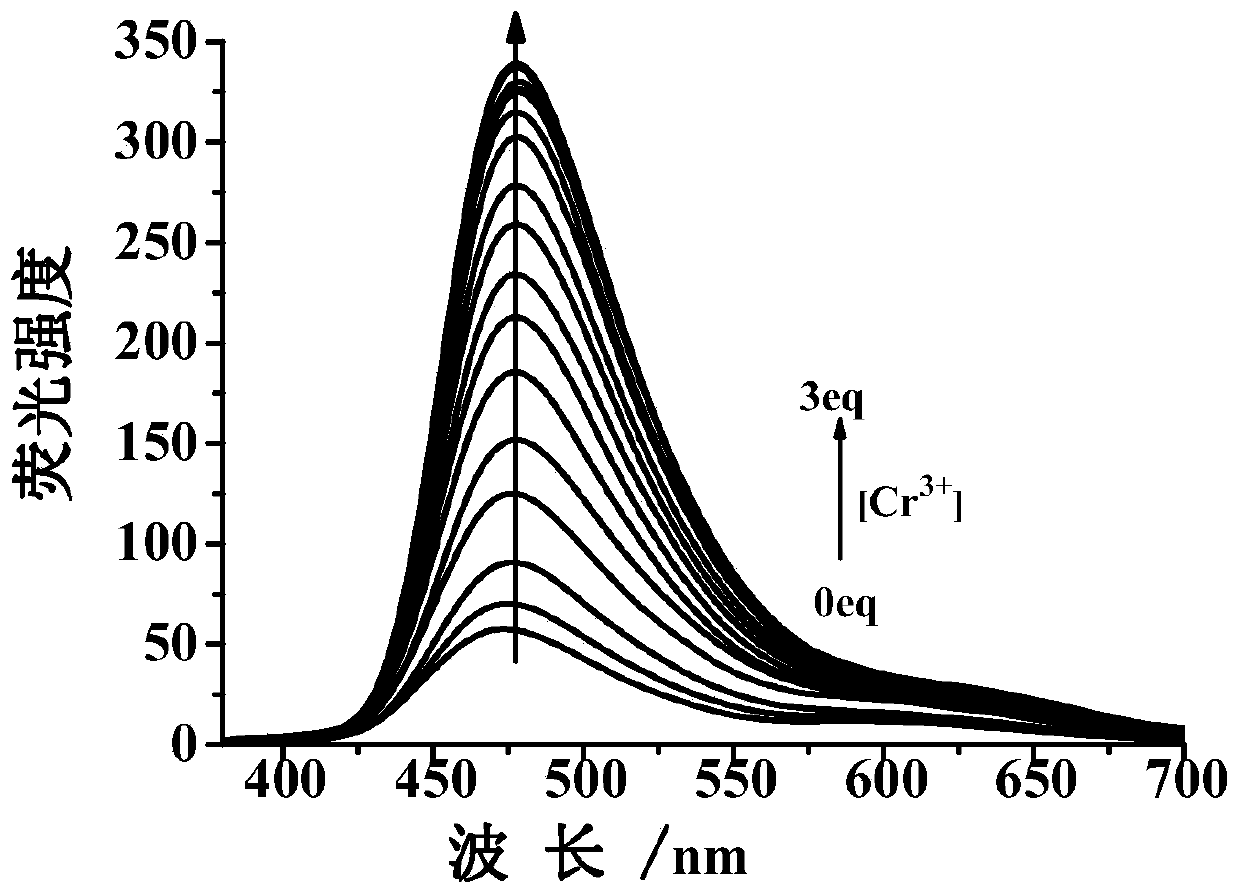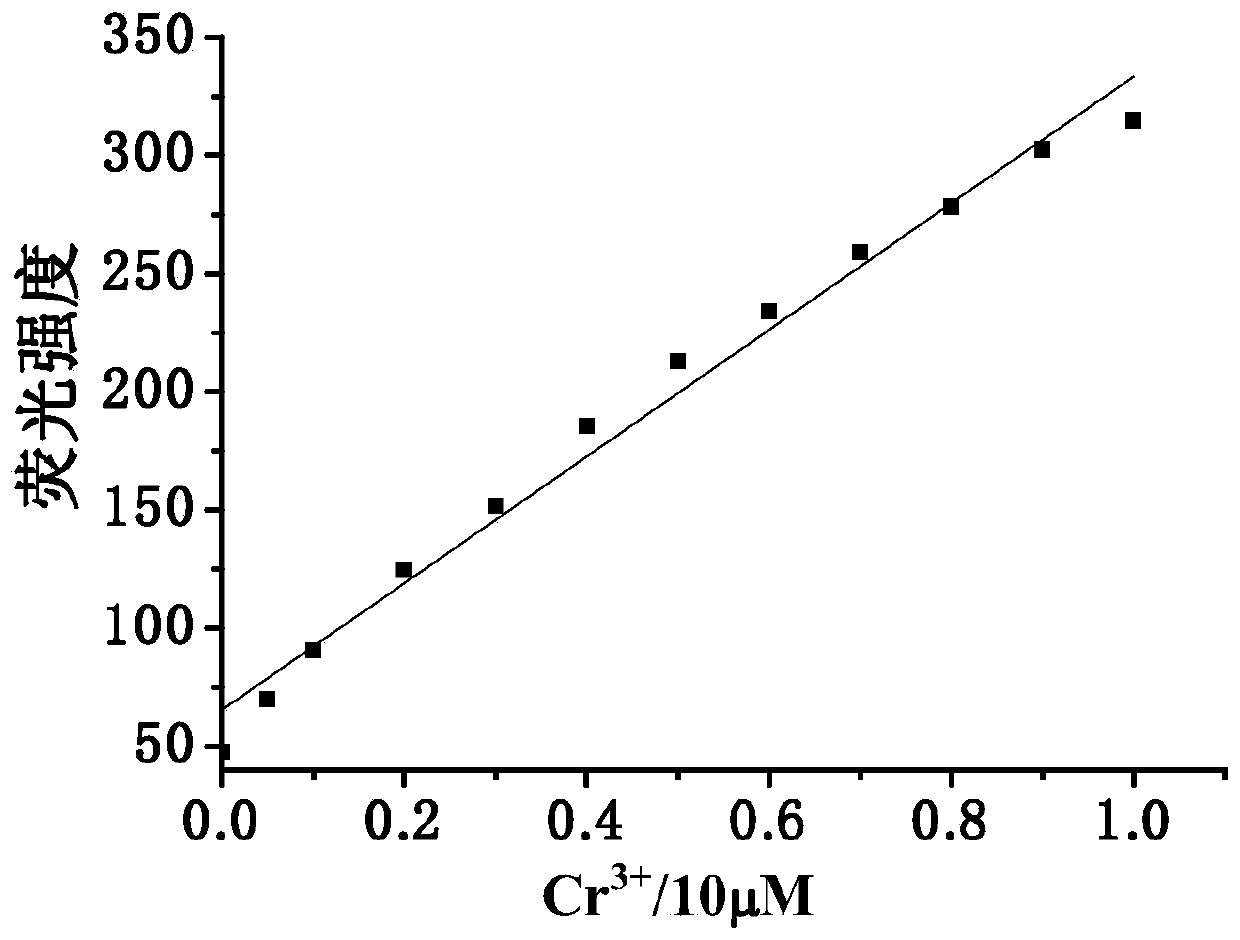A probe for detecting multiple ions and its application
A probe and ion technology, which is applied to a probe for detecting ions and its application field, can solve the problems of low detection efficiency, inability to achieve single-probe multi-target detection, and high detection cost
- Summary
- Abstract
- Description
- Claims
- Application Information
AI Technical Summary
Problems solved by technology
Method used
Image
Examples
Embodiment
[0079] 1. A compound whose chemical name is N,N',N"-tris[4-(benzothiazol-2-yl)-2,5-dihydroxybenzaldehyde]-(3-aminoethyl)amine , as a probe for detecting specific ions, its chemical structure is:
[0080]
[0081] Its synthetic route is as follows:
[0082]
[0083] The specific preparation method is:
[0084] (1)N 2 In a dry 500ml three-neck flask under protection, add 40mmol of p-xylylene dimethyl ether, 200mmol of tetrabutylethylenediamine and 140ml of ether to obtain product A;
[0085] (2) Product A is cooled to below 0°C to obtain Product B;
[0086] (3) Add 100ml of n-butyllithium with a concentration of 1.6M to product B, continue to react at 0°C for 10 minutes after the addition, reflux the reaction solution for 20 hours, and obtain product C after the reaction solution is cooled to room temperature;
[0087] (4) Add 220 mmol of N,N-dimethylformamide to product C, and stir overnight at room temperature; obtain product D;
[0088] (5) Add 100ml of water to pr...
PUM
 Login to View More
Login to View More Abstract
Description
Claims
Application Information
 Login to View More
Login to View More - R&D
- Intellectual Property
- Life Sciences
- Materials
- Tech Scout
- Unparalleled Data Quality
- Higher Quality Content
- 60% Fewer Hallucinations
Browse by: Latest US Patents, China's latest patents, Technical Efficacy Thesaurus, Application Domain, Technology Topic, Popular Technical Reports.
© 2025 PatSnap. All rights reserved.Legal|Privacy policy|Modern Slavery Act Transparency Statement|Sitemap|About US| Contact US: help@patsnap.com



